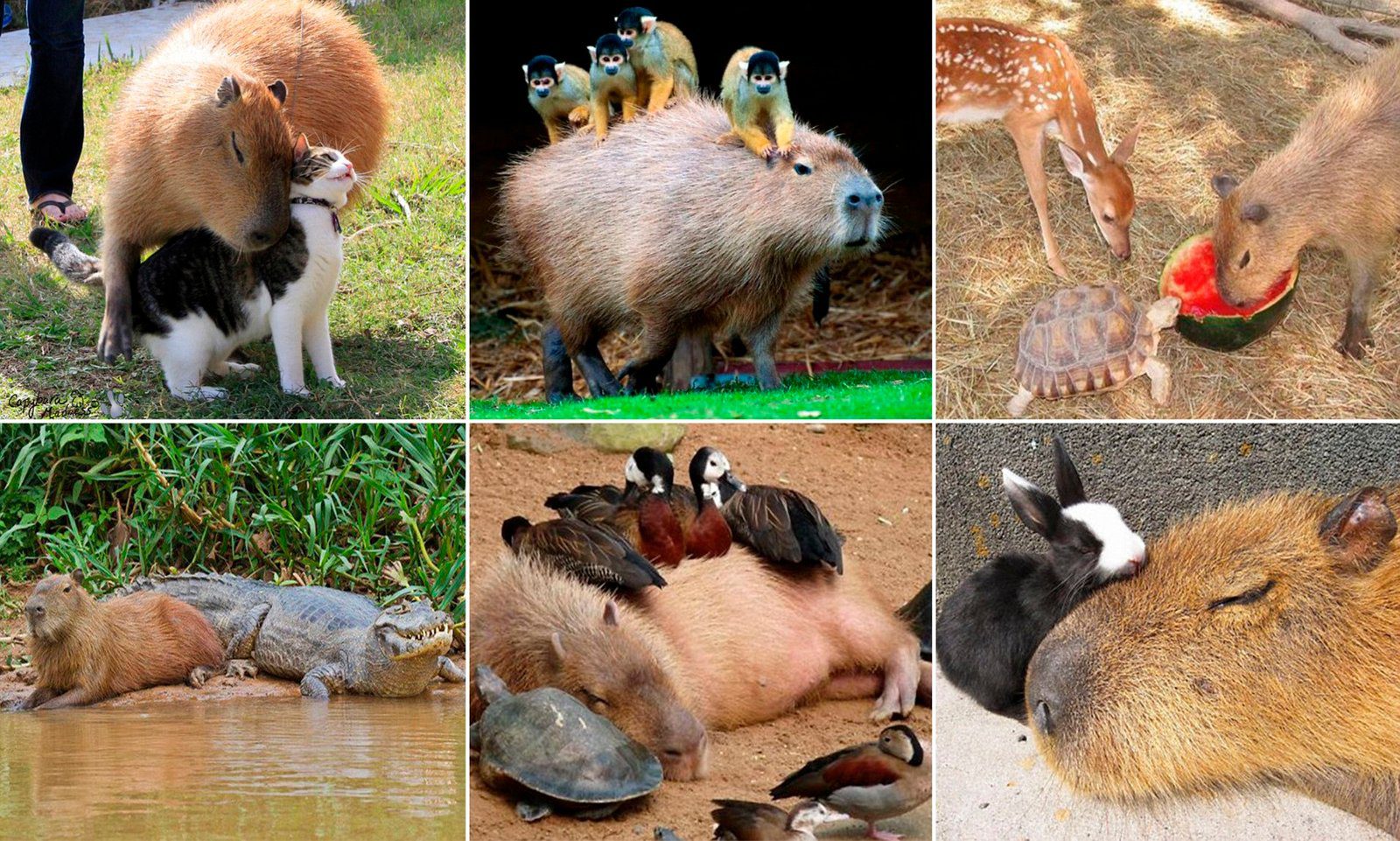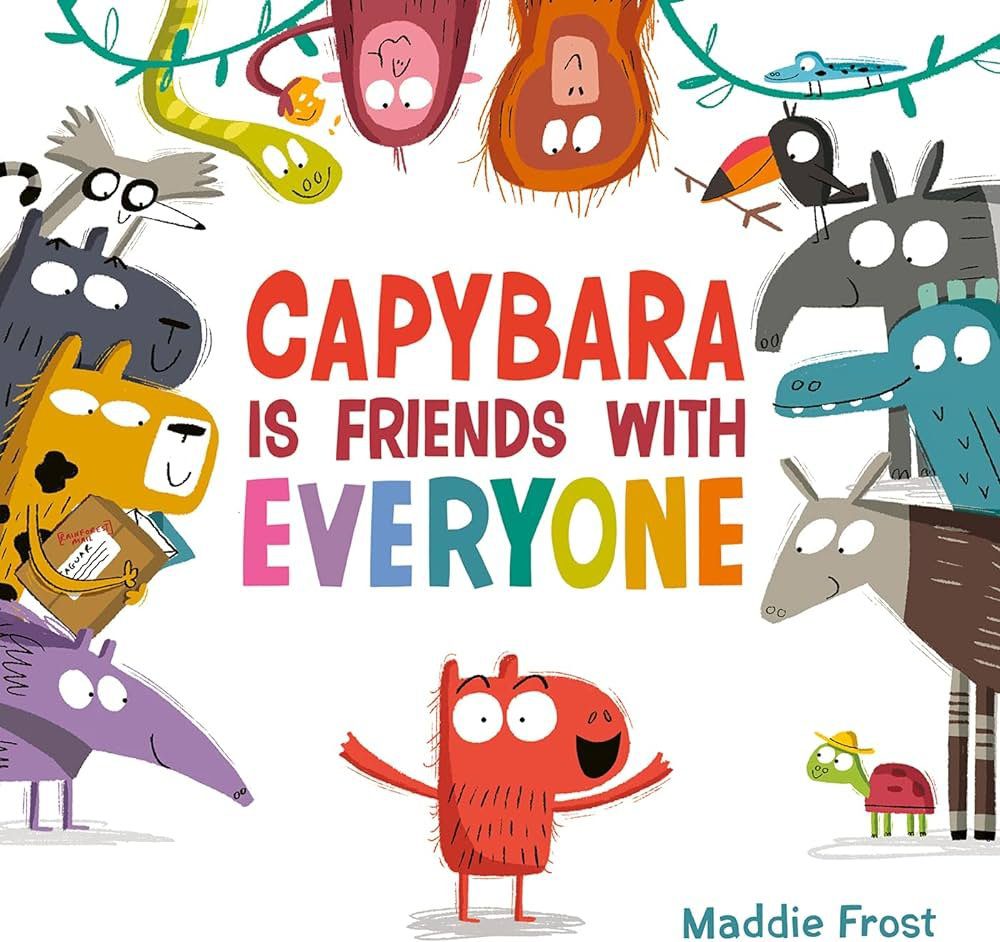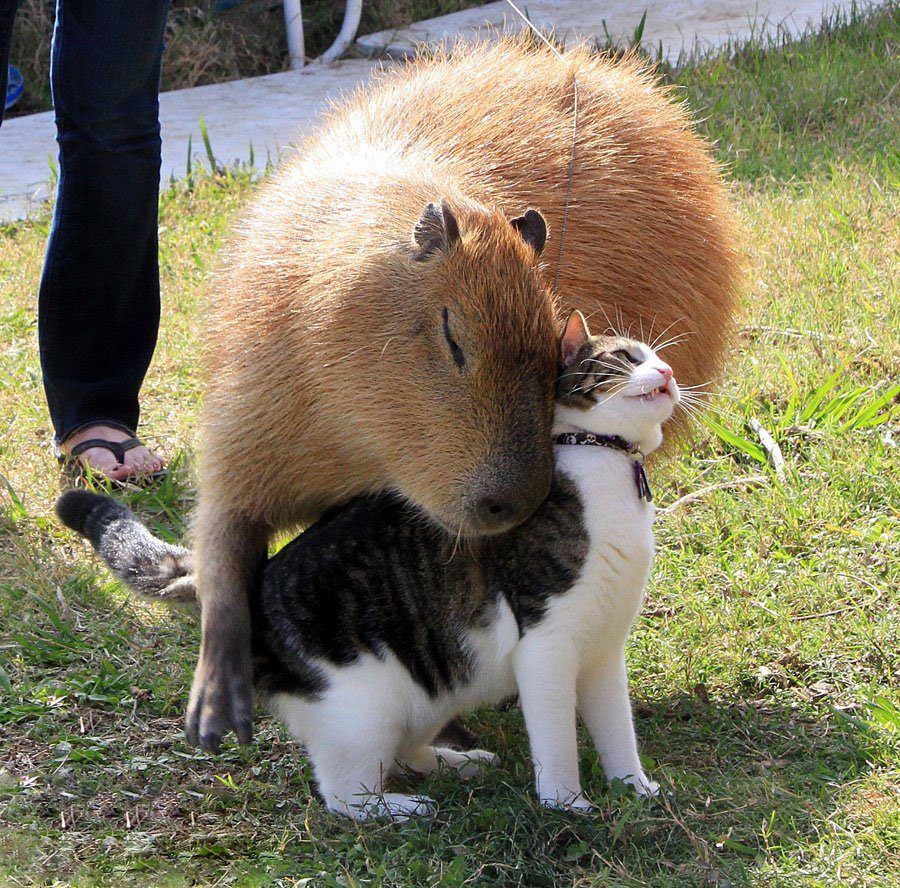Table of Contents
Have you ever heard of the capybara? If not, get ready to meet your new furry friend! The capybara, known for being the largest rodent in the world, is certainly everyone’s friend. With their gentle temperament and sociable nature, these adorable creatures have captured the hearts of people all around the globe. From lounging in hot springs to forming strong bonds with their fellow capybaras, this article will explore the fascinating world of the capybara and why they are truly a friend to all. So, grab your snacks and let’s embark on a journey to discover the irresistible charm of the capybara!

Physical Description
Size and Weight
The capybara is the largest rodent in the world, reaching an impressive size. On average, adult capybaras measure about 4.5 feet in length and stand around 2 feet tall at the shoulder. They are truly a sight to behold! Despite their large size, they are surprisingly agile and can move with remarkable grace. In terms of weight, capybaras can vary, but the average adult can weigh anywhere between 77 and 146 pounds. You’ll be amazed at the sheer presence of these gentle giants.
Coat and Color
Capybaras have a distinct and beautiful coat that keeps them well-adapted to their environment. Their fur is dense and can vary in color, typically ranging from a reddish-brown to a dark brown. This coloration helps them blend into their surroundings and provides them with excellent camouflage. Their coat is also water-resistant, making them well-suited for their semi-aquatic lifestyle. It’s incredible to see how their sleek fur glistens in the sunlight!
Distinct Features
Apart from their size, capybaras possess a few unique features that set them apart. Their large, round heads are adorned with dark, expressive eyes and short, rounded ears. They have a blunt muzzle and prominent front teeth, which are continually growing and help them with their herbivorous diet. One of the most distinctive features of capybaras is their webbed feet, perfectly suited for their semi-aquatic lifestyle. These adaptations allow them to navigate efficiently both on land and in water, truly making them remarkable creatures.
Habitat and Distribution
Natural Habitat
Capybaras can be found in a variety of habitats throughout South America, from lush rainforests to grassy savannas and marshes. They are particularly fond of areas near bodies of water, such as rivers, lakes, and ponds, as they provide ample opportunities for swimming and cooling off in hot climates. These semi-aquatic rodents have even been known to take to the water at times to escape from predators or to find food. Their natural habitat not only offers them protection but also an abundant source of food.
Geographical Range
Capybaras have a fairly extensive range, inhabiting much of South America. They can be found in countries such as Brazil, Venezuela, Colombia, Argentina, and Paraguay, among others. These regions provide the perfect combination of water sources and vegetation for capybaras to thrive. Due to their adaptability, capybaras have managed to inhabit a wide range of ecosystems, making them a truly versatile species.

Social Behavior
Group Structure
Capybaras are highly social animals and live in large groups known as herds, or colonies, that can consist of up to 100 individuals. Within these herds, a dominant male known as the “alpha” male usually leads. The social structure is hierarchical, where the alpha male has priority access to food and other resources. The group dynamic is essential for capybaras, as they find safety, companionship, and the opportunity for successful breeding within these structured communities.
Communication
Capybaras communicate with each other in various ways, relying heavily on vocalizations, scent marking, and body language. They often produce a range of vocalizations, including purring, barking, and even whistling. These sounds serve as a means of expressing their emotions, such as fear, contentment, or warning signals. Additionally, capybaras employ scent marking by rubbing their scent glands on objects, leaving behind their unique scent, which helps to establish territory and communicate with other members of the herd. Body language, such as grooming, play fighting, and posturing, also plays a significant role in their communication repertoire.
Playful Nature
One endearing trait of capybaras is their playful nature. They are known to engage in various forms of play, including chasing each other, running, jumping, and even swimming together. Play serves important social functions, strengthening the bonds between herd members and potentially helping them practice essential physical and social skills. It’s delightful to see these gentle creatures frolic and enjoy each other’s company, reminiscent of a carefree childhood filled with joy.
Diet and Feeding
Herbivorous Diet
Capybaras are strict herbivores, feeding on a diverse array of plant material. Their herbivorous diet mainly consists of grasses, aquatic plants, and even the bark and leaves of certain trees. Despite being herbivores, capybaras possess unique adaptations in their digestive system that allow them to efficiently break down and extract nutrients from plant matter. Their large, complex digestive tract even enables them to digest tough and fibrous plant material.
Food Sources
Capybaras are often seen grazing near bodies of water, where they can find an abundance of grasses and aquatic plants. They are excellent foragers, able to locate and consume a wide range of plant species. This ability allows them to adapt their diet to the available food sources in their habitat. From tender grass shoots to succulent water plants, capybaras take advantage of their environment and maintain a well-rounded diet to sustain their energetic lifestyle.

Reproduction and Parenting
Breeding Habits
Breeding amongst capybaras is a fascinating display of social dynamics and rituals. When the breeding season arrives, alpha males compete for the opportunity to mate with receptive females. Male capybaras engage in various displays of dominance, such as vocalizations and physical interactions, to establish their superiority. Once a dominant male has successfully courted a female, they form a monogamous pair bond that often lasts for life. This bond facilitates successful breeding and ensures both parents’ involvement in nurturing the offspring.
Gestation Period
The gestation period for capybaras is approximately 150 days, after which the female gives birth to a litter of around 2 to 8 young. The mother usually seeks out a secluded location, such as a burrow or dense vegetation, to give birth. Capybara mothers are incredibly attentive and provide care and protection to their newborns. The young are precocial, meaning they are born relatively developed and can walk and swim shortly after birth, allowing them to quickly adapt to their environment.
Caring for Offspring
Both male and female capybaras actively participate in parental care. The father plays an essential role in protecting and nurturing the young by assisting with their grooming, vocalizations, and even babysitting duties. This collaborative approach to parenting strengthens the bond between the parents and ensures the survival and well-being of the offspring. Witnessing the dedication and nurturing nature of capybara parents is a heartwarming experience.
Relationship with Humans
Domestication
Although capybaras have not been fully domesticated, in some regions, they have formed a close relationship with humans. In certain South American countries, capybaras are semi-domesticated, meaning they are comfortable living near human settlements and can even be found in urban areas. These docile creatures often enjoy interacting with humans when treated with respect and care.
Roles in Captivity
Capybaras are occasionally kept in captivity, where they can thrive under proper care and conditions. They are known to adapt well to captivity, particularly in zoos or wildlife sanctuaries with spacious enclosures that mimic their natural habitat. In these settings, capybaras serve as ambassadors for their species, helping to educate the public about their unique characteristics and the importance of their conservation.
Popularity as Pets
Capybaras have gained popularity as pets in some parts of the world. However, it is important to note that they require specialized care, proper socialization, and a suitable habitat to ensure their well-being. Capybaras are incredibly affectionate animals, forming strong bonds with their human caregivers. If you are considering a capybara as a pet, it is crucial to research local laws and regulations regarding ownership and always obtain them through reputable breeders or rescue organizations.

Conservation Status
Threats
Capybaras face several threats to their survival in the wild. Habitat loss due to deforestation, urbanization, and agricultural expansion poses a significant risk to their population. Additionally, they are hunted for their meat, skin, and perceived medicinal properties in some regions. Pollution and water contamination also impact their well-being, especially as they rely on water sources for survival. Climate change further exacerbates these threats by altering their natural habitat and food availability.
Conservation Efforts
Efforts are underway to protect capybaras and their habitats. Several organizations work to raise awareness about the importance of preserving these remarkable creatures and their ecosystems. Conservation projects focus on safeguarding key habitats, establishing protected areas, and educating local communities about sustainable practices. Research is also being conducted to better understand capybaras’ behavior, population dynamics, and ecological role, providing insights to guide conservation efforts effectively.
Interactions with Other Species
Predators
Despite their imposing size, capybaras have several predators in their natural habitats. Large felines such as jaguars and pumas pose a serious threat to capybaras, especially to young or injured individuals. Crocodiles and caimans are also known to prey on capybaras when they venture too close to the water. However, capybaras rely on their strong social structure and keen senses to detect and avoid potential danger, minimizing their vulnerability to predation.
Symbiotic Relationships
Capybaras form interesting symbiotic relationships with several other species. They often share their habitats with birds, such as the smooth-billed ani, who act as faithful companions and provide early warnings about approaching predators. These beneficial relationships demonstrate the intricate connections that exist within ecosystems and highlight the vital role capybaras play in fostering the overall biodiversity of their habitats.

Folklore and Cultural Significance
Mythology and Legends
Throughout South America, capybaras hold a special place in local folklore and mythology. They are often depicted as symbols of abundance, transformation, and communal harmony. In some indigenous cultures, capybaras are considered sacred animals and are associated with fertility and protection. Their presence in narratives and belief systems reflects the deep cultural significance capybaras have in these societies.
Symbolism and Art
Capybaras are beloved animals and are celebrated in various forms of art and symbolism. They are often seen as symbols of relaxation, tranquility, and social harmony. Their gentle nature and peaceful demeanor have captured the imagination of many artists, who portray them in paintings, sculptures, and even cartoons. Capybaras have become cultural icons that embody a sense of unity and the importance of maintaining harmonious relationships with others.
Facts and Trivia
Largest Rodent
As the largest rodents in the world, capybaras dwarf their relatives in size. Some individuals can grow as large as 150 pounds, standing out as true giants among rodents. Their impressive size is a testament to their unique adaptations and their ability to thrive in various ecosystems.
Aquatic Adaptations
Capybaras possess several adaptations that allow them to excel in their semi-aquatic environment. Their webbed feet allow them to swim gracefully and navigate through water with ease. They can stay submerged for several minutes and even use their nostrils and ears, which close tightly, to keep water out. These adaptations make capybaras perfectly suited for a life both on land and in water.
Nocturnal Habits
While capybaras are primarily diurnal, meaning they are most active during daylight hours, they also exhibit some nocturnal habits. They often engage in more active behaviors, such as foraging and socializing, during the cooler hours of the night. This adaptation allows capybaras to avoid the scorching daytime temperatures, increasing their chances of finding food and engaging in social interactions.
In conclusion, the capybara truly is everyone’s friend. From their impressive size and friendly demeanor to their remarkable adaptations and social nature, these gentle giants captivate the hearts of all who encounter them. Understanding their physical description, habitat and distribution, social behavior, diet and feeding habits, and their unique roles in culture and conservation further enhances our appreciation for this incredible species. Let us continue to cherish and protect the capybara, an extraordinary creature that reminds us of the beauty and diversity of the animal kingdom.

